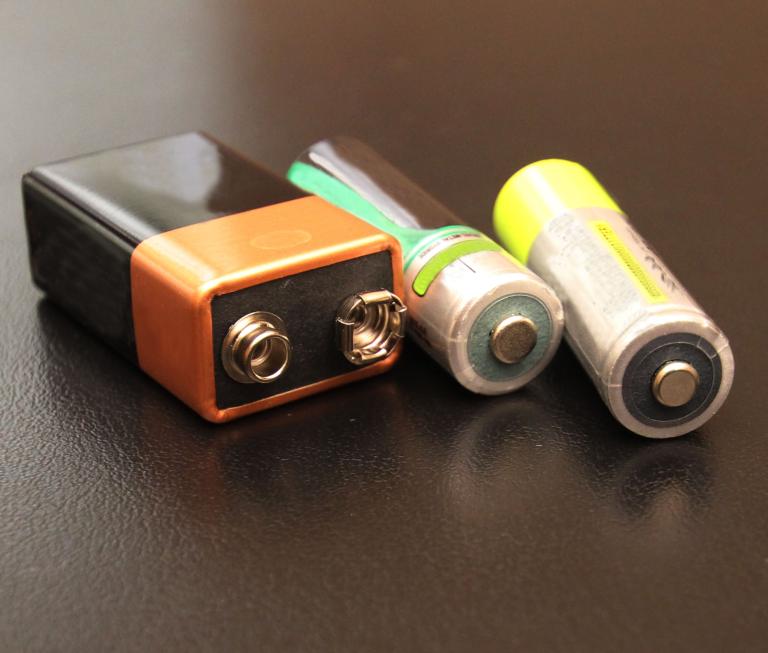
“This multidisciplinary approach is one of the new options that we would like to establish for our students' Culminating Undergraduate Experiences (CUE).”
Kettering University is collaborating with Intech Energy Storage Corporation (IESC) of Toronto, Canada, to test the critical characteristics of, and experimentally fabricate, a newly designed aluminum-based battery that is more versatile, has a longer shelf life and is made of environmentally friendly, non-toxic, low cost components.
Dr. Matthew Sanders, professor of Industrial and Manufacturing Engineering and director of the Center of Culminating Undergraduate Experiences at Kettering, has received a funded research grant from IESC in the amount of $200,000 to perform validation testing on the batteries in an on-campus, multidisciplinary project. Sanders will collaborate with Dr. Alexandre Iarochenko, president of Intech Energy Storage Corporation, on the research.
“This multidisciplinary approach is one of the new options that we would like to establish for our students' Culminating Undergraduate Experiences (CUE),” said Sanders.
The aluminum battery validation project is the pilot for the multidisciplinary CUE. It will involve students and faculty from the Electrical and Computer Engineering, Chemistry, Mechanical Engineering and Industrial and Manufacturing Engineering departments.
IESC believes that the aluminum-based battery they have developed may achieve energy densities in excess of those of existing batteries, and that they have overcome the problems identified with existing aluminum batteries such as hydrogen corrosion, early dry out, high cost, low shelf life, positional restrictions and start-up time, according to Sanders.
“It is our responsibility to examine the battery design and determine if IESC’s claims are accurate,” said Sanders. “In essence, we need to determine how fast the battery uncharges. There is currently a lot of ambiguity, so we will need to identify any problems that need to be resolved prior to taking the product to market,” he explained.
The battery is made of aluminum and organic materials. “There are no harmful metals involved,” said Sanders, “it is a green battery.” Sanders described the battery design as layers of aluminum and other non-harmful metals and layers of a proprietary organic material. The more layers the stronger the battery, he said.
According to IESC, the battery concept can be used in every type of battery from a pacemaker to a truck or boat motor. The possible intended uses for the battery include land and sea transportation vehicles, multi-purpose usage such as laptops and cell phones as well as specialty products such as military equipment.
“We will apply standard research protocols and methodologies to examine the battery under different conditions to determine its durability,” said Sanders. Phase 1 of the project is estimated to take up to 12 months to complete, and includes building a prototype for testing. In the first set of tests, Kettering’s IME Department will assess the battery’s performance when exposed to extreme heat and cold.
Phase 1 will be carried out in two parts, designing and assembling “proof of concept” batteries which will be tested to define and prove their critical characteristics, and part two, performance testing to evaluate compliance with applicable regulatory codes and standards to assess their commercialization rating.
The prototypes will be charged for testing in small electronic devices such as computers in both rectangular and parallelepiped shapes. The tests will determine energy density, charge and discharge rates, the effects of temperature and life cycles.
Phase II will involve durability testing including tests in both the Crash Safety Center and the Shaker Lab to determine if the battery design can withstand impact and vibration stresses.
Preliminary results of the IESC prototype show the following characteristics: they can operate in any orientation (i.e. sideways, or upside down), have negligible hydrogen corrosion, have no aluminum hydroxide, are non air breathing, can be re-charged more the 500 times, recharge quickly, have an open circuit of 1.77 volts or more, long shelf life and the internal chemical reaction does not produce by-products. The Kettering team will be testing and validating IESC’s results.
“IESC came to Kettering because our technical ability is well-known and because we are close to the Canada/U.S. border and located in the U.S.,” said Sanders. “They want to market this battery in the U.S., and we have the right faculty, the right facilities and the right location,” he added.